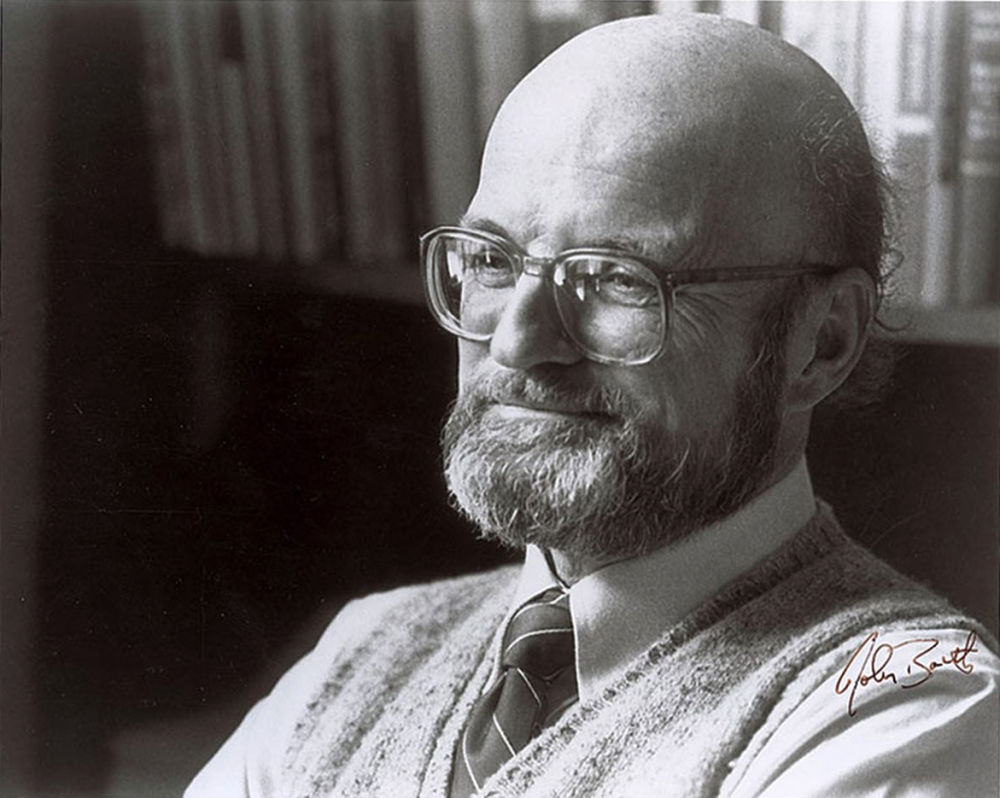Last spring and summer, I was reading the stories of the Swiss writer Peter Bichsel. I began reading them in Vienna. The little book—a hardcover, but small and lightweight—was a gift from a German friend at the start of my trip, to provide me with something to read in German, since I wanted to improve my facility in the language. I had brought with me from home a paperback thriller by a very popular German writer, but I wasn’t enjoying it: the plot, so far, was tiresome, the main character unpleasant, and the tone sarcastic. My friend thought she could find something better for me, and she was right. I continued reading Bichsel’s stories on the train from Vienna to Salzburg, and then in Salzburg, and then on the train to Zurich, and then in Zurich, Berlin, Hamburg, and Cologne, and on each train I took to go from one city to the next.
In fact, Peter Bichsel regularly writes about reading and about train journeys. He will also sometimes begin a story, or remark in the middle of a story, “There are stories that are hardly worth telling,” or “There is almost nothing to say about X,” and then sometimes follow that with a “but”: “But I have wanted to tell this story for a long time now,” or “But it has to be told, because it was the first story in my life, the first one that I remember.” He then goes on to tell a lovely, quiet, modest story, a story that glows with human kindness, or love, or some combination of compassion, understanding, and honesty. (Or am I, these days, finding this quality so marked in his stories because I am seeking it?)
I was reading his stories as I traveled, but I was also distracted by all that I saw and experienced, so that I did not often think about his stories when I was not reading them. But then I particularly thought of him and his stories after an experience I had in Salzburg. I wanted to describe this experience, but I wanted to say, near the beginning of my story, that there was not much to tell, because, really, so little happened: there was a scene, one that involved a peculiar character, and later a coincidence.
I HAD STOPPED FOR LUNCH at a small, undistinguished restaurant that I had picked out earlier in the day, on my way through the town and across the river to find Mozart’s birthplace. It looked to me like a reliable sort of local place, without pretensions, not expensive, not particularly attractive to tourists, but frequented by locals. Its entrance was set back from the main street and it was called Café Central. Rain was falling in the street outside, and the umbrella stand inside the door was filled with wet umbrellas. The coat tree was hung with damp jackets and slickers. The colors of the place were strikingly tan, brown, and cream. The first part of the room, where one entered, contained the bar and was partitioned off from the main room to serve bar customers at small tables. A shelf along the top of the partition held stacks of folded newspapers and magazines for the customers.
The place was quite crowded, though not yet entirely full, and noisy, since this was the height of the lunch hour. A buxom, energetic woman who seemed to be the manager or co-owner of the place showed me to a cramped spot in a line of little tables against one wall, but after she went away, and after a moment’s hesitation, I got up and walked on back to look for a more comfortable spot. I found a roomier and more peaceful seat in the far corner, at a small table between two tables already occupied. To my left was a large corner table surrounded by banquettes, and to my right, a small table for two, identical to my own.
At the large table were seated a man and a woman, evidently a couple, though for a long time they did not speak to each other. The man was calmly and very thoroughly reading a newspaper, and the woman was sitting completely still beside him and gazing off into the distance with a placid and agreeable expression on her face. I am left with the impression, now, that the man was Asian, though I can’t be sure of this. The woman was not. Try as I may to retrieve a more exact image of the man’s face, there is no more memory available to me and I cannot do it. It is not relevant to the story, anyway, but this vague impression adds to my sense of the difference or disparity between the two of them, though they seemed comfortable and companionable.
It was the woman at the table to my right who came to interest me the most during that lunch hour, although at first, in my preoccupation with settling into my seat, putting my bag down beside me, bringing out something to read, and looking around to take in the sights and sounds of the room, I did not pay particular attention to her. It was only as I became used to my surroundings, having examined the features of the room, the customers in my part of it—the larger part—and those beyond the partition, having absorbed the particular characteristic sights and sounds of this place and taken note of any more unusual features or occupants, that my attention was more and more drawn to my neighbor.
I had ample time to observe her, as well as the others in the restaurant, because, although the young waitress and the older manager both kept rushing back and forth without a pause among the tables, taking orders and carrying food, my order was very slow in coming—thirty minutes, forty minutes. Since I was tired from my long morning of wandering through the streets of the older parts of Salzburg on this side of the river and across the bridge on the other side, stopping to read plaques and look into shop windows, crossing back over the bridge, I did not mind waiting.
The woman to my right was perhaps in her fifties—it was hard to tell. She was a large woman, though of moderate weight, tall and broad shouldered, in build like a man, and dressed in such workaday clothes that her purse seemed incongruously feminine: plain pants and sturdy shoes and a T-shirt with some message on it that I eventually identified as pro–European Union. Her hair was short and curly and rather disordered, pressed down in one part and standing up in another. She wore glasses of no particular style, and these gave her a somewhat serious or studious look.
What drew my attention first, and then repeatedly, was the speed with which she was eating. She had ordered some kind of a chicken dish—chicken drumsticks with a pile of white rice. I later decided that it had to be one of the specials of the day, available for a good price. All her motions were quick, perhaps twice the normal speed of a person consuming a restaurant meal, even one at an inexpensive lunch place. She manipulated her utensils, wielded her knife and fork, one in each hand, constantly, industriously, and busily, her elbows out to the sides. She chewed fast and swallowed fast. Some of her motions were neat, as when she cleaned a drumstick of its flesh and piled the bone at one edge of her plate, alongside another bare bone. But sometimes she overshot her aim, so that rice spilled off the edge of her plate. She would quickly reposition a drumstick to present a different angle for cutting and occasionally give the plate a little spin to reach another drumstick or gain better access to the pile of rice. Spin, stab, slice, open mouth, receive forkful of food, chew, swallow; spin, stab, slice, etc.
After I had watched her eat for a few minutes, I noticed that she had, to her right, in front of her, facing her, and increasing my sense of the urgency with which she was eating—or more than urgency, the frantic haste—a small round-faced travel alarm clock. And yet, through the course of her lunch, she did not otherwise seem in a hurry to finish her lunch and leave the place. She paused sometimes to read her newspaper, and later to make a note in a notebook.




